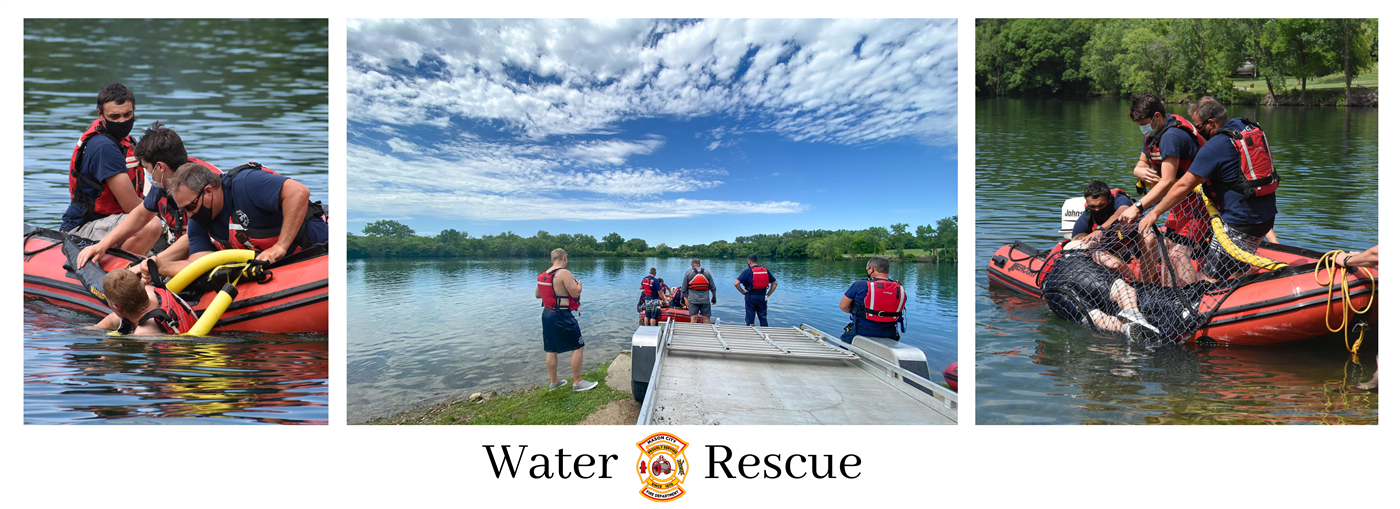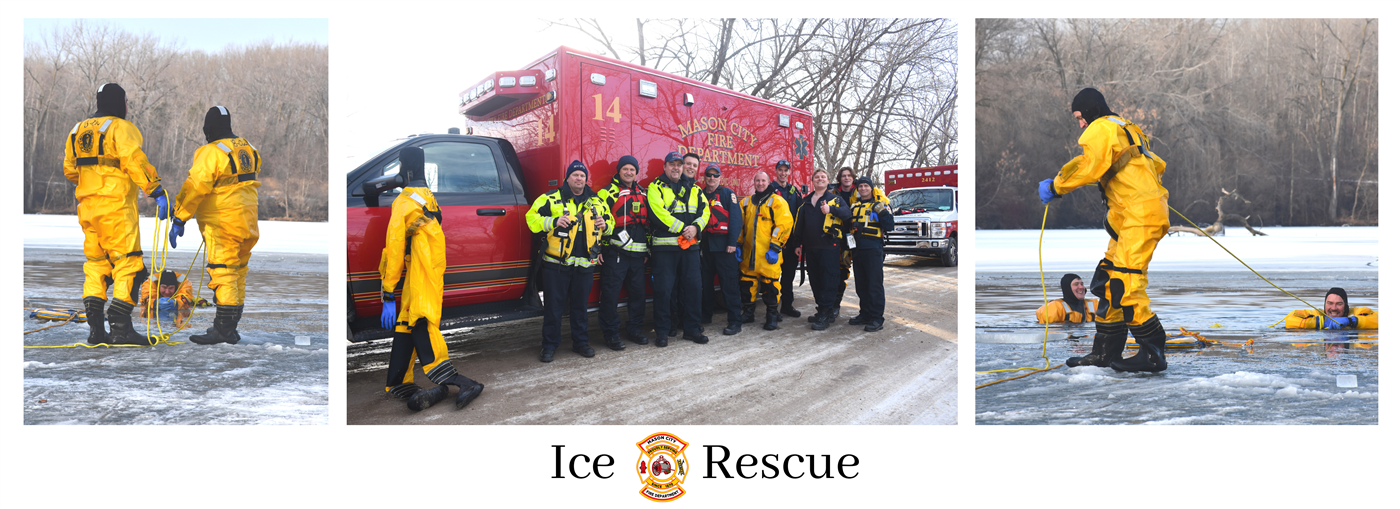Everyone in the City probably already knows that the Fire Department does more than just put out fires and operate ambulances. Certainly the "Great Flood of 2008" saw all the fire fighters out in the Department's boats, DNR boats, loaned boats, trying to help all those who needed a "technical rescue". Fire fighters spend a great deal of their time at the Station in training, particularly in technical rescues. While the Fire Department hopes it can rescue anyone from any situation who needs help, the fire fighters regularly train on:
CONFINED SPACE
The Department trains in numerous different "types" of confined spaces, each of which has its own particular problems, equipment usage and potential dangers. Here a fire fighter is practicing in one of the City's water towers.

TRENCH RESCUE Of all the technical rescues, the one that probably has the most potential for causing serious injuries to the fire fighters trying to save someone is a trench rescue. Generally, during this type of rescue operation, a ditch or other dirt digging has collapsed and someone is trapped. The fire fighters need to learn how to shore up the sides of the trenches before they can safely rescue anyone.

BOAT & WATER RESCUE The Mason City Fire Department has been involved in the field of water rescue for over thirty years. The Department has boats, a jet ski and cold water rescue gear. This state-of-the-art equipment is kept in a dive trailer pulled behind Squad 2 (usually). Of course, the best technical rescue the Mason City Fire Department can provide to the citizens of Mason City is education.
Prevention of water-related emergencies is the first obligation of a rescue team. More people drown in the United States every year than die in a fire.
Water Safety Begins with You
-
Always wear a life jacket when boating. 89% of boating fatalities were not wearing a Personal Flotation Device ( P.F.D. ).
-
Refrain from the use of alcohol or drugs when boating. Over 50% of all boating fatalities are alcohol-related.
-
Never drive a vehicle across a flooded road or street. 1 1/2 to 2 feet of water will float most cars.
-
Avoid fast-moving floodwaters, the power of moving water is enormous; even wading in shallow, swift water can be life threatening.
-
Stay away from dams and weirs; they do not look dangerous, but they are nicknamed, "The Drowning Machine" for good reason.
-
Never dive into water where the depth is unknown. This causes several hundred cases of paralysis each year!!
Mason City Fire Department employs two water rescue boats and a jet ski. Both boats are inflatable and easily deployed. The lightest is only 125 lbs. The boats are used for initial response along with the jet ski.
 ICE RESCUE Of all of the technical rescues at the Fire Department, it is in the ice and cold water rescues that the fire fighters have probably benefited the most from advances in technology. With the new arctic and cold water gear, the fire fighters stay quite warm while in Iowa's frigid winter waters.
ICE RESCUE Of all of the technical rescues at the Fire Department, it is in the ice and cold water rescues that the fire fighters have probably benefited the most from advances in technology. With the new arctic and cold water gear, the fire fighters stay quite warm while in Iowa's frigid winter waters.

SWIFT WATER RESCUE The fire fighters used all of their training and equipment in swift water rescue during the 2008 flood in Mason City. All water rescue equipment is contained in the Department's dive trailer which is usually pulled behind 2332 (or Squad Two). In addition to the two inflatable rafts and motors, the Department recently received the use of a jet ski from Mason City Honda for use in water rescues.
Follow us on Facebook

Back to MCFD Home Page